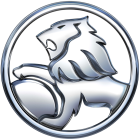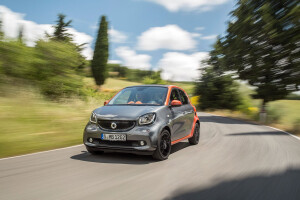Latest Review
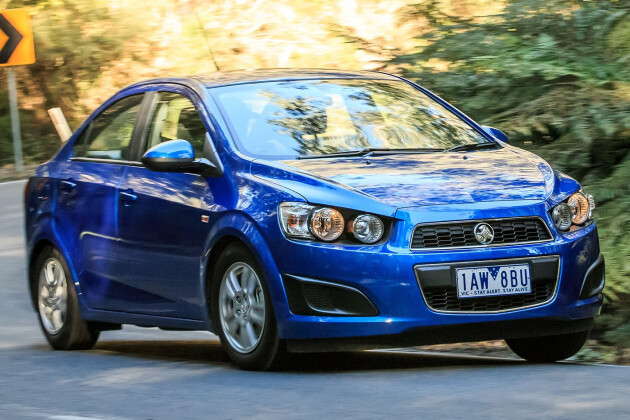
2015 Holden Barina and Spark Review
The Holden Barina is a low-priced city car that steers and handles reasonably well, and looks good. The Barina Spark is a smaller car that shares the badge.
What stands out?
The Holden Barina is a low-priced light car that steers and handles reasonably well and has attractive exterior styling.
The Barina Spark is a smaller model that is easy on fuel, and that was replaced in April 2016 by the Holden Spark (which is covered in a separate review).
What might bug me?
Getting to grips with the tyre-repair kit if you get a flat tyre – unless you have ordered the full-sized spare wheel, which is an extra-cost option.
What body styles are there?
Four-door sedan and five-door hatchback.
All Holden Barinas drive their front wheels. The Barina is classed as a light car, and the Barina Spark is classed as a sub-light or micro car, both lower priced.
What features does every Barina have?
Every Holden Barina and Barina Spark has air-conditioning, and an MP3-compatible radio/CD system with 3.5mm auxiliary and iPod-compatible input sockets. Phone and audio controls are on the steering wheel, and there is Bluetooth hands-free connectivity for phone calls. A trip computer displays information such as the distance until the fuel tank is empty.
All have wheels made from an aluminium alloy, which are usually lighter and better looking than steel wheels with plastic covers. They also have a tyre inflator kit. (A full-sized steel spare wheel is available as an option at extra cost.)
There are six airbags: two directly in front of the driver and front passenger; one outside each front occupant to protect the upper body; and a curtain airbag along each side that protects the heads of front and rear occupants.
There is electronic stability control, which can help the driver to control a skidding car. All new cars must have this feature.
Every Barina Spark has in addition heated, power-adjustable exterior mirrors and front fog-lights.
The least costly of the bigger Barinas, the Barina CD (sedan and hatchback), forgoes those two features but has significant additions of its own. They include bigger wheels (15-inch diameter, up from 14 inches on the Spark), power windows for all four occupants (rather than just those in the front), cruise control, and Bluetooth audio streaming in addition to the Spark’s phone-call only Bluetooth. There are extra steering wheel buttons for the cruise control and Bluetooth, and the headlamps turn on automatically when it gets dark.
Every Holden Barina and Barina Spark carries a three-year, 100,000 kilometre warranty.
Which engine uses least fuel, and why wouldn't I choose it?
The 1.2-litre petrol four-cylinder engine in the manual gearbox Barina Spark is the most economical in a Barina – it uses 5.2 litres/100km in the official test (city and country combined). Automatic Sparks have a slightly bigger and more powerful version of this engine and use about 10 per cent more fuel.
If you want a Spark, they are your only choices. They offer just enough power to get you around town, but you will find yourself wishing for more on the highway.
Two different engines are available in a Barina, and both handle country drives much more comfortably.
The 1.6-litre petrol four-cylinder found in the Barina CD and CDX, the less costly of the three bigger Barinas, offers about 40 per cent more power in most driving conditions than the engines in the Spark. It uses about 6.5 litres/100km, officially.
The 1.4-litre turbocharged petrol four-cylinder available only in the most expensive Barina, the sporty Barina RS, offers about 25 per cent more power again. This is the most enjoyable Barina engine. Fuel use is about the same as the 1.6 in the official test.
The official figures use a government mandated laboratory test to simulate real-world conditions. Most cars use more fuel in everyday driving than the test predicts; however, 1.6 engined Barinas that WhichCar testers have driven strayed further than several alternative light cars from their official figures.
Real-world driving of the Barina RS has returned a broader range of fuel figures – both lower and higher – than for other Barinas: its 1.4 turbo can be very economical in steady freeway driving, but thirsty when driven enthusiastically.
The Barina Spark drives through five-speed manual or four-speed auto gearboxes. Barina CD and CDX models have five-speed manuals or six-speed autos, and the Barina RS offers a choice between a six-speed manual and a six-speed auto.
What key features do I get if I spend more?
Step past the Barina CD and spend more for a CDX sedan or hatchback and you get wheels and tyres that are bigger again at 17 inches, which look racier and provide a small increase in grip and handling precision. There are front foglights, and the six-speed automatic gearbox is standard.
CDX models are nicer to sit in thanks to synthetic ‘Sportec’ seat trim, front-seat heaters, and a leather-wrapped steering wheel and gear lever handle. Rear parking sensors give the driver an audible indication of how close objects behind are to the bumper.
A 7-inch colour touchscreen is an appealing window into the MyLink infotainment system that debuts on CDX versions. MyLink offers an Eyes Free mode which gives you voice control over multimedia functions. MyLink also allows you to view movies and image slide shows, and provides integration for smartphone apps.
Spend more again for the sporty Barina RS hatchback and you get the more powerful, turbocharged engine, and disc rear brakes rather than drum brakes (which will increase stopping power slightly, and respond more consistently if you work the brakes very hard). The manual gearbox returns as an option and gains a ratio, offering six speeds rather than five.
The Barina RS also has leather seats, alloy sports pedals, and sporty looking exterior additions such as spoilers and side skirts.
Does any upgrade have a down side?
The 17-inch wheels and tyres on CDX and RS versions reduce low-speed ride comfort compared with the 15-inch wheels and tyres fitted to CD versions.
‘Prestige’ paint comes at an additional cost of about $550. Three of the colours offered for the Barina and Barina Spark are no-cost standard colours. The other three Spark colours, and four Barina colours, attract the extra charge.
How comfortable are the Barinas?
The Barina Spark is intended as a city runabout car, and in these conditions it is acceptably comfortable. Its 14-inch tyres help low-speed ride comfort thanks to their deep sidewalls, which put more rubber and air between the wheel and the road.
However, like many other sub-light cars the Spark does not weigh much and has little sound insulation and a basic suspension system. This limits its ability to absorb bumps and suppress road noise and vibration, and these limitations become more obvious on country roads where speeds are higher.
The opposite is true of the bigger Barina. Australian tuning of its similarly simple suspension makes it an accomplished country tourer for a light car. The Barina offers firm damping, which controls the body better at highway speeds. This keeps its occupants quite comfortable on trips out of the city.
However, the Barina’s ride is a bit less composed in the city, where sharp bumps are often felt by occupants, especially in more expensive versions fitted with the 17-inch wheels and tyres.
A tilt and reach adjustable steering column makes it easier to get comfortable behind the wheel of the Barina. The Spark offers only tilt adjustment.
Flat, firm front seats in all Barinas and Barina Sparks are easy to slide in and out of at either end of short trips, but are not particularly comfortable or supportive for longer hauls.
What about safety in a Holden Barina?
All Holden Barina and Barina Spark variants are rated as Very Good, thanks in large part to the standard six airbags. More expensive versions have rear parking sensors and auto headlamps. No Barina has a reversing camera, but the inclusion of such a system would have lifted some models to Excellent.
(To see a full list of the safety features on any model, select the car and look under the features tab. Safety-related features are listed in red.)
The Australasian New Car Assessment Program (ANCAP) awarded the Barina Spark four stars for safety, and assigned the bigger Barina its maximum five stars.
I like driving - will I enjoy this car?
The regular Barina’s handling is co-operative, but in CD and CDX models the enjoyment level is diluted by the engine. There is not enough power to elevate the experience from good to great.
In the Barina RS, the power of the turbo engine brings extra entertainment. Nevertheless, the RS does not respond immediately enough to the accelerator to qualify as a hot hatch, and nor does the sound of the engine reward you when you spin it hard. There is sufficient power for comfortable highway overtaking, however.
Any regular Barina is more fun for spirited driving than the Spark, whose most enjoyable aspects – notably, ease of parking and the infrequency of trips to the fuel bowser – arise from how small it is.
How is life in the rear seats?
The Barina has a 2525mm wheelbase, which is 150mm longer than the Spark’s. The extra length translates directly into rear leg room, which is generous in the Barina – as is room for heads, shoulders and feet – and tight in the Spark. This is not to suggest that the Spark is particularly bad among cars of its type: sub-light cars are intended to carry rear passengers only occasionally.
The bigger Barina also offers a slightly elevated back seat base, which gives rear occupants a good view forward and out of the side windows.
However, just as in the front, the rear seat bases and backs in all versions are too firmly cushioned for great comfort on longer trips, and under-thigh support is lacking.
How is it for carrying stuff?
The Barina Spark has a tiny boot with a capacity of just 170 litres. However, the hatchback’s maximum 568 litres of cargo volume if the rear-seat backrests are folded flat gives it good luggage flexibility.
The bigger Barina offers a generous 502 litres of boot space in sedan form – that’s similar to Holden’s large car, the Commodore.
The Barina hatch offers 290 litres of cargo volume, which is about average for a light car. With its 60/40 rear seatbacks folded, that figure expands to a decent 653 litres.
Where are the Barinas made?
The Holden Barina and Barina Spark are manufactured in South Korea.
What might I miss that similar cars have?
A reversing camera. This is standard in the Honda Jazz, for example.
The effortless low-speed accelerator pedal response of the best turbocharged light cars, such as the Renault Clio and Volkswagen Polo, which offer turbo engines from the entry-level versions up.
The latest active safety features, such as automatic emergency braking. The Mazda2, for example, offers low-speed auto braking as an extra-cost option.
Several light-car alternatives – among them the Clio, the Polo, and the Mazda2 – offer a more rewarding experience to keen drivers, and more ease and comfort on extended trips.
Models from other brands offer longer warranties, such as micro car the Mitsubishi Mirage (five years), and light cars the Renault Clio (five years) and Kia Rio (seven years).
Other light cars worth considering include the Toyota Yaris, and good alternatives in the micro class include the Nissan Micra and Suzuki Celerio.
I like this car, but I can't choose which version. Can you help?
Yes, certainly. The Barina CD hatch is our choice from the range. It has value in its favour, and if you want to spend more there are excellent alternatives available from other brands.
Are there plans to update the Barina soon?
The Barina is due for replacement about 2016. The next Barina is expected to be a Holden-badged version of the European Opel Corsa, which will likely be significantly better than the current model.
The Barina Spark has reached the end of its model life. It was replaced in April 2016 with a version of the Chevrolet Spark/Opel Karl, which Holden has called simply the Spark. The Korean-made Holden Spark feels much better to drive, and its equipment includes a touchscreen that can display apps from your smartphone.
Score breakdown
Things we like
- Smart styling
- Six airbags in all versions
Not so much
- Cabin ambience
- Dull engines
News
-
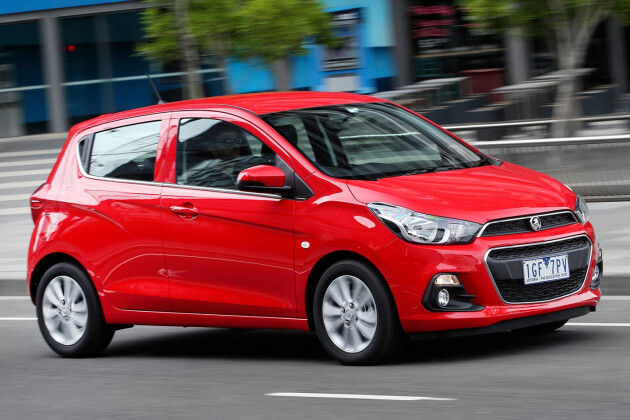 News
NewsHolden Spark snuffed out for Australian market
Holden’s micro hatch has been killed off in response to poor sales results
-
.jpg) Advice
AdviceHolden's Future: 2017 Holden range
In this four-part series, we look at the cars that Holden has already introduced to Australia as part of its transformation.
-
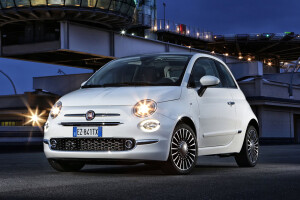 Car Style
Car StyleTop five shortest cars to park
Not all of these are obvious choices for getting around the city, but there’s nothing shorter for slipping into the smallest of parking spaces.
-
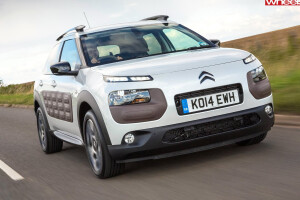 Features
FeaturesCrystal ball: New small cars to look for in 2016
Small cars are set for a big year, with appealing new hatchbacks and baby SUVs on the way
-
.jpg)
Best Value Small Cars 2015
-
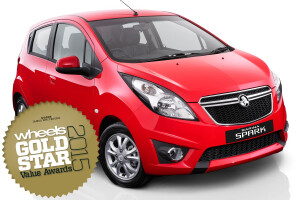
City Cars: Gold Star Value Awards 2015
-
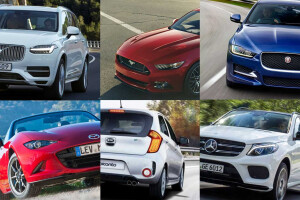
New cars to watch in 2015
-
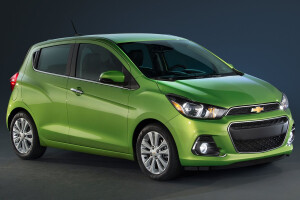
2015 New York Motor Show: Holden Spark to drop Barina name

